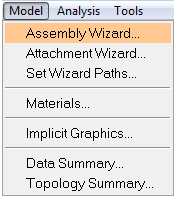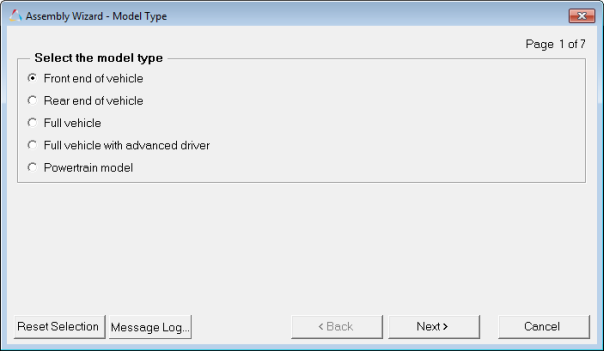The Vehicle Library is installed as a part of the normal MotionView installation. To begin building a model, select Model menu > Assembly Wizard.

The first Assembly Wizard dialog asks you to select the type of model you would like to build:

| • | Front end of vehicle - builds one of the five front suspensions and corresponding suspension subsystems (shock absorbers, springs, stabilizer bars, and so on) and will also allow you to select an appropriate steering system to go with the front suspension. The model can be kinematic or compliant and will support all of the half-car analysis events, such as ride, roll, steer and K&C. |
| • | Rear end of vehicle - builds one of eleven rear suspensions (user selected) and builds the subsystems associated with the suspensions. The model can be kinematic or compliant and will support all of the half car analysis events, such as ride, roll, steer and K&C. |
| • | Full Vehicle - builds a full vehicle model, with steering, front suspension, rear suspension, powertrain, drivetrain, and tires. The full vehicle option has a wide variety of selections which allow over one hundred thousand different combinations to be built. |
| • | Powertrain model - builds a rigid body engine supported by engine mounts. Longitudinal and transverse engine configurations are supported. Standard engine events can also be run. The events are normally used to understand engine motion (for packaging) and engine mount forces due to the engine torque. |









